 W
WIn heraldry, the Allocamelus was the depiction of a mythical creature with the head of a donkey and the body of a camel. It was first used as a crest for the English Eastland Company, and later by the Russia Company.
 W
WAn Alphyn, also known as awfyn or alfin in older writings, is a rare heraldic creature. It is much like a heraldic tyger, but stockier and with tufts of hair covering its body, and also has a thick mane and long thin tongue. Another notable characteristic is its knotted tail, reminiscent of Celtic design and similar to that of the griffin. Sometimes it is depicted as having an eagle's or dragon's talons on its forelegs, other times they are cloven, like a goat's. Occasionally all four feet are depicted as having the claws of a lion. In English heraldry, the Alphyn was used as a heraldic badge of the Lords de la Warr, and also appeared on the guidon held by the knight in the Milleflour Tapestry in Somerset.
 W
WAn Amphiptere is a type of winged serpent found in European heraldry.
 W
WAq Bars is the emblem of Tatarstan. It is an ancient Bulgar symbol translated as "White Leopard" or "Snow Leopard", and has been in use since 1991 as the official symbol of Tatarstan.
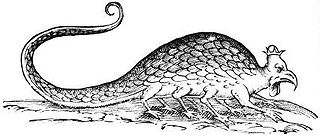 W
WIn European bestiaries and legends, a basilisk is a legendary reptile reputed to be a serpent king, who can cause death with a single glance. According to the Naturalis Historia of Pliny the Elder, the basilisk of Cyrene is a small snake, "being not more than twelve fingers in length", that is so venomous, it leaves a wide trail of deadly venom in its wake, and its gaze is likewise lethal.
 W
WThe bat is a heraldic symbol sometimes used as a charge, but most prominently used as a crest on or around the crown in municipal arms of the former Crown of Aragon—specifically in Valencia, Catalonia and the Balearic Islands.
 W
WThe bear as heraldic charge is not as widely used as the lion, boar or other beasts.
 W
WThe biscione, also less commonly known as the vipera ("viper"), is a heraldic charge showing on argent an azure serpent in the act of consuming a human. It is a historic symbol of the city of Milan.
 W
WThe black panther, also known as the Carantanian panther after the Medieval principality of Carantania, is a Carinthian historical symbol, which represents a stylized heraldic panther. As a heraldic symbol, it appeared on the coat of arms of the Carinthian Duke Herman II as well as of the Styrian Margrave Ottokar III. In this region it was most frequently imaged on various monuments and tombstones. The symbol can still be found in the coat of arms of the Austrian state of Styria, although the colours have changed. The symbol is also widely used within structures of the Slovenian security forces; namely by the Slovenian Armed Forces and the Slovenian Police. Since 1991, there have been several proposals to replace the Slovenian coat of arms with the black panther.
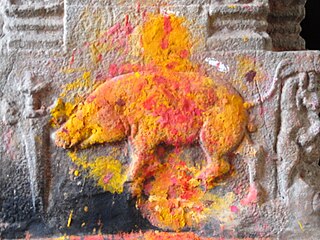 W
WThe wild boar and boar's head are common charges in heraldry.
 W
WThe catoblepas (pl. catoblepones; from the Greek καταβλέπω, "to look downwards" is a legendary creature from Ethiopia, first described by Pliny the Elder and later by Claudius Aelianus.
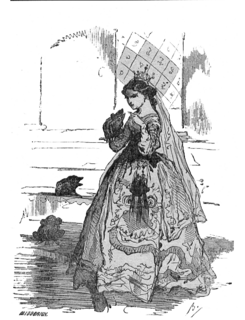 W
WCrapaud is a French word meaning "toad" in English.
 W
WA dragon is a large, serpentine legendary creature that appears in the folklore of many cultures around the world. Beliefs about dragons vary considerably through regions, but dragons in western cultures since the High Middle Ages have often been depicted as winged, horned, four-legged, and capable of breathing fire. Dragons in eastern cultures are usually depicted as wingless, four-legged, serpentine creatures with above-average intelligence.
 W
WThe emmet, also called the pismire, is an heraldic charge in European heraldry, particularly in English and German heraldry, representing historic names for the ant.
 W
WThe enfield is a fictitious creature sometimes used in heraldry.
 W
WThe gajasimha or gajasiha is a mythical hybrid animal in Hindu mythology, appearing as a sinha or rajasiha with the head or trunk of an elephant. It is found as a motif in Indian and Sinhalese art, and is used as a heraldic symbol in some Southeast Asian countries, especially Cambodia and Thailand. In Siam, the gajasimha served as the symbol of the kalahom, one of the king's two chief chancellors. It appears as a supporter in the coat of arms of Siam, in use from 1873 to 1910, and the royal arms of Cambodia, officially adopted in 1993.
 W
WThe Gallic rooster is an unofficial national symbol of France as a nation, as opposed to Marianne representing France as a state, and its values: the Republic. The rooster is also the symbol of the Wallonia region and the French Community of Belgium.
 W
WA ged is a heraldic term for the fish known in English as a pike. It is often used in "canting" coats; that is, using coats of arms to make a pun on the last name of the bearer, one of his titles, a nickname, or the name of his estate. The word ged is derived from the Old Norse gaddr (spike). The Norse word is the origin of the terms for pike in the modern North Germanic languages: Swedish: gädda, Danish: gedde, Norwegian: gjedde, and the Faroese and Icelandic: gedda.
 W
WThe griffin, griffon, or gryphon is a legendary creature with the body, tail, and back legs of a lion; the head and wings of an eagle; and sometimes an eagle's talons as its front feet. Because the lion was traditionally considered the king of the beasts, and the eagle the king of the birds, by the Middle Ages, the griffin was thought to be an especially powerful and majestic creature. Since classical antiquity, griffins were known for guarding treasures and priceless possessions.
 W
WThe hieracosphinx is a mythical beast found in Egyptian sculpture and European heraldry. The god Haroeris was usually depicted as one. The name Hieracosphinx comes from the Greek Ιερακόσφιγξ, which means ἱέραξ (Hawk) + Σφίγξ (Sphinx).
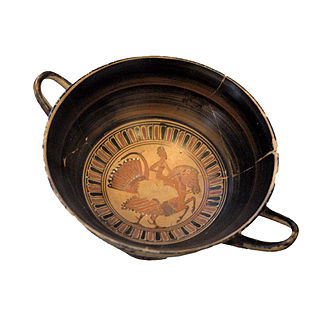 W
WA hippalectryon or hippalektryon, is a type of fantastic hybrid creature of Ancient Greek folklore, half-horse (front) and half-rooster (hind), including the tail, wings and hind legs. Its colour varies between yellow and reddish. No myths related to it are currently known.
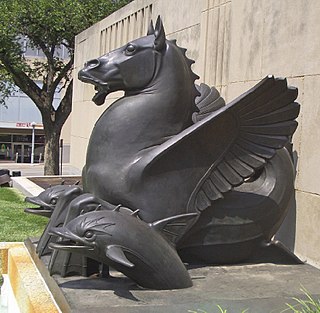 W
WThe hippocampus or hippocamp, also hippokampos, often called a sea-horse in English, is a mythological creature shared by Phoenician, Etruscan, Pictish, Roman and Greek mythology, though its name has a Greek origin. The hippocampus has typically been depicted as having the upper body of a horse with the lower body of a fish.
 W
WThe hound or dog is used as a charge in classical heraldry. In English heraldry, the commonly used variant are the talbot, also blazoned as sleuth-hound, e.g. in the arms of Wolseley of Staffordshire, the greyhound and bloodhound. Rarely seen variants are the ratch-hound, the mastiff, the foxhound, the spaniel and the terrier. The "sea-dog" is a curious charge resembling the talbot but with scales, webbed feet and a broad tail, used in the arms of Stourton barony, presumably originally depicting a beaver . Similar charges include the wolf and the fox.
 W
WInti is the ancient Incan sun god. He is revered as the national patron of the Inca state. Although most consider Inti the sun god, he is more appropriately viewed as a cluster of solar aspects, since the Inca divided his identity according to the stages of the sun. Worshiped as a patron deity of the Inca Empire, Pachacuti is often linked to the origin and expansion of the Inca Sun Cult. The most common story says that he is the son of Viracocha, the god of civilization.
 W
WKangaroo emblems and popular culture deals with how the kangaroo has become a recognisable symbol of Australia, both within Australia itself, and internationally. It also deals with the various uses which have been made of the image and name of the kangaroo.
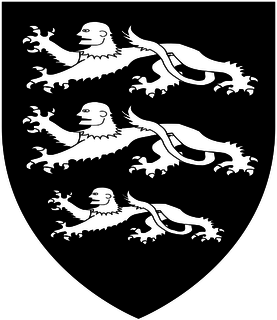 W
WA lampago is a mythical heraldic beast in the form of a "man-tiger or man-lion" with the body of a tiger or lion and the head of a man. It should be distinguished from similar mythical heraldic beasts the manticore and the satyral.
 W
WThe lion is a common charge in heraldry. It traditionally symbolises courage, nobility, royalty, strength, stateliness and valour, because historically the lion has been regarded as the "king of beasts". The lion also carries Judeo-Christian symbolism. The Lion of Judah stands in the coat of arms of Jerusalem. Similar-looking lions can be found elsewhere, such as in the coat of arms of the Swedish royal House of Bjelbo, from there in turn derived into the coat of arms of Finland, formerly belonging to Sweden.
 W
WThe manticore is a Persian legendary creature similar to the Egyptian sphinx that proliferated in western European medieval art as well. It has the head of a human, the body of a lion and a tail of venomous spines similar to porcupine quills, while other depictions have it with the tail of a scorpion. There are some accounts that the spines can be shot like arrows, thus making the manticore a lethal predator. It devours its prey whole, using its triple rows of teeth, leaves no traces of its victims behind.
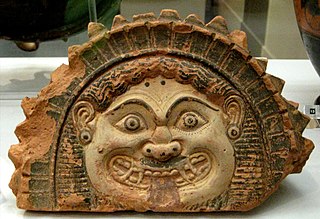 W
WIn Greek mythology, Medusa also called Gorgo, was one of the three monstrous Gorgons, generally described as winged human females with living venomous snakes in place of hair. Those who gazed into her eyes would turn to stone. Most sources describe her as the daughter of Phorcys and Ceto, although the author Hyginus makes her the daughter of Gorgon and Ceto.
 W
WIn folklore, a mermaid is an aquatic creature with the head and upper body of a female human and the tail of a fish. Mermaids appear in the folklore of many cultures worldwide, including the Near East, Europe, Asia, and Africa.
 W
WThe musimon is a charge in European heraldry. It is a cross between a goat and a sheep; it has the feet and body of a goat, the head and beard of a ram, and two horns from each for a total of four—two curved and two straight.
 W
WThe ouroboros or uroboros is an ancient symbol depicting a serpent or dragon eating its own tail. Originating in ancient Egyptian iconography, the ouroboros entered western tradition via Greek magical tradition and was adopted as a symbol in Gnosticism and Hermeticism and most notably in alchemy. The term derives from Ancient Greek οὐροβόρος, from οὐρά oura 'tail' plus -βορός -boros '-eating'. The ouroboros is often interpreted as a symbol for eternal cyclic renewal or a cycle of life, death, and rebirth. The skin-sloughing process of snakes symbolizes the transmigration of souls, the snake biting its own tail is a fertility symbol. The tail of the snake is a phallic symbol, the mouth is a yonic or womb-like symbol.
 W
WThe Pantheon is a mythical or imaginary creature used in heraldry, particularly in Britain. They are often depicted as white deer with the tail of a fox and spangeled with purple stars along their back.
 W
WA Panther is a creature in ancient legend that resembles a big cat with a multicoloured hide.
 W
WA pard is a legendary animal that is listed in Medieval bestiaries and in Pliny the Elder's book Natural History. Over the years, there have been many different depictions of the creature including some adaptations with and without manes and some in later years with shorter tails. However, one consistent representation shows them as large felines often with spots.
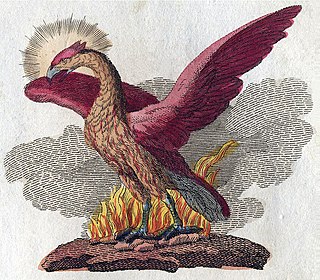 W
WIn Ancient Greek folklore, a phoenix is a long-lived bird that cyclically regenerates or is otherwise born again. Associated with the sun, a phoenix obtains new life by arising from the ashes of its predecessor. Some legends say it dies in a show of flames and combustion, others that it simply dies and decomposes before being born again.
 W
WA rooster, also known as a cockerel or cock, is a male gallinaceous bird, with cockerel being younger and rooster being an adult male chicken.
 W
WThe Saxon Steed is a heraldic motif associated with Lower Saxony, Kent and Westphalia.
 W
WThe Saxon Steed is a heraldic motif associated with Lower Saxony, Kent and Westphalia.
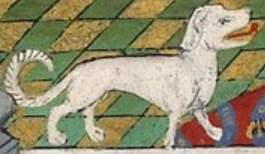 W
WThe Talbot was a type of hunting hound common in England during the Middle Ages. It is depicted in art of the period as small to medium-sized, white in colour, with short legs, large powerful feet, a deep chest with slender waist, long drooping ears, and a very long curled tail. It is shown in one well-known example at Haddon Hall with a fierce facial expression. It is now extinct but is believed to be an ancestor of the modern beagle and bloodhound. It is uncertain whether it was a scent hound, a sight hound, or a dog used for digging out quarry. Nor is it known what type of quarry it hunted, whether deer, fox, boar, etc.
 W
WTyger, also known as heraldic tiger or tygre, is an imaginary beast used as a charge in heraldry.
 W
WThe White Greyhound of Richmond is one of the Queen's Beasts commissioned for display at the coronation of Queen Elizabeth II in 1953. A stone copy can also be found in the Royal Botanic Gardens, Kew.
 W
WThe White Hart was the personal badge of Richard II, who probably derived it from the arms of his mother, Joan "The Fair Maid of Kent", heiress of Edmund of Woodstock. It may also have been a pun on his name, as in "Rich-hart". In the Wilton Diptych, which is the earliest authentic contemporary portrait of an English king, Richard II wears a gold and enamelled white hart jewel, and even the angels surrounding the Virgin Mary all wear white hart badges. In English Folklore, the white hart is associated with Herne the Hunter.
 W
WThe white horse of Kent known colloquially as the white horse rampant is a symbol of the county of Kent, in south-east England. The heraldic image is correctly blazoned as Gules, a stallion forcené argent.
 W
WThe wild man is a mythical figure that appears in the artwork and literature of medieval Europe, comparable to the satyr or faun type in classical mythology and to Silvanus, the Roman god of the woodlands.
 W
WThe wind horse is a symbol of the human soul in the shamanistic tradition of East Asia and Central Asia. In Tibetan Buddhism, it was included as the pivotal element in the center of the four animals symbolizing the cardinal directions and a symbol of the idea of well-being or good fortune. It has also given the name to a type of prayer flag that has the five animals printed on it.
 W
WThe Winged Sea Caribou is a mythical creature featured on the heraldic coat of arms of the Federal Court of Canada (FCC).
 W
WThe wolf has been widely used in many forms in heraldry during the Middle Ages. Though commonly reviled as a livestock predator and man-eater, the wolf was also considered a noble and courageous animal, and frequently appeared on the arms and crests of numerous noble families. It typically symbolised the rewards of perseverance in long sieges or hard industry.
 W
WThe yale or centicore is a mythical beast found in European mythology and heraldry.